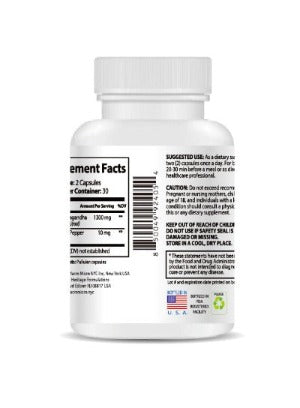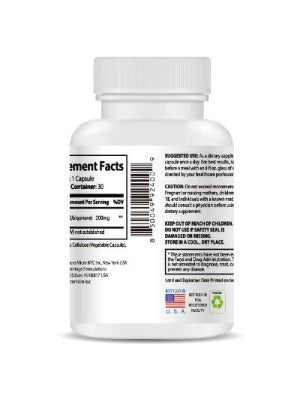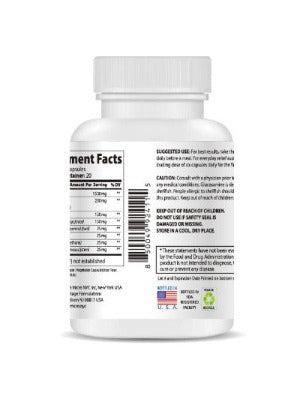Do your eyes feel gritty, itchy, or constantly tired? You might be one of the millions of people suffering from dry eye syndrome. While eye drops and humidifiers are common solutions, what if the answer to your discomfort could be found in your kitchen? The connection between diet and eye health is more significant than you might think. What you eat—or don't eat—can play a crucial role in managing or even preventing dry eyes.
This comprehensive guide will explain the science behind why certain nutrients are essential for tear production and eye comfort. We’ll dive into a list of specific, doctor-recommended foods and provide practical tips on how to incorporate them into your daily diet.
The Nutritional Foundation of Healthy Tears
Remember the tear film we talked about? The one with the three crucial layers—mucin, aqueous, and lipid? A balanced tear film is key to comfortable eyes, and each layer depends on specific nutrients to function properly.
-
The Aqueous (Water) Layer: This layer needs sufficient hydration. Simply put, if you’re dehydrated, your body will struggle to produce enough tears.
-
The Mucin Layer: This mucus-like layer needs vitamins A and D for the goblet cells in your conjunctiva to produce it properly.
-
The Lipid (Oil) Layer: This is where diet has a major impact. The meibomian glands produce the oils that prevent your tears from evaporating too quickly. For these oils to be of high quality, your body needs healthy fats, particularly Omega-3 fatty acids.
When any of these nutritional building blocks are missing, the tear film becomes unstable. The watery part of the tears evaporates too fast, leading to the burning, stinging, and gritty feeling we associate with dry eyes.
The Key Nutrients and Where to Find Them
Let’s get specific. Here are the top nutrients you should focus on to support tear film health and where to find them.
1. Omega-3 Fatty Acids: The MVP of Eye Comfort
If there is one nutrient you should prioritize, it's Omega-3s. These polyunsaturated fats are powerful anti-inflammatories. They are believed to improve the function of the meibomian glands, helping them produce higher-quality, more stable oils for the tear film. This is the single most important dietary factor for combating evaporative dry eye, which is the most common type.
-
Top Food Sources:
-
Fatty Fish: Salmon, mackerel, sardines, tuna, and anchovies are loaded with EPA and DHA, the most beneficial types of Omega-3s. Aim for at least two servings per week.
-
Flaxseeds and Chia Seeds: These are excellent plant-based sources. Add a tablespoon of ground flaxseed or chia seeds to your oatmeal, smoothies, or yogurt daily.
-
Walnuts: A handful of walnuts a day can provide a good dose of plant-based Omega-3s (ALA).
-
Fortified Foods: Look for eggs, milk, or orange juice that are fortified with Omega-3s.
-
2. Vitamin A: The Protector
Vitamin A is crucial for maintaining the health of the cornea and the conjunctiva. It plays a vital role in the production of mucin, which helps the tears spread evenly across the eye. A deficiency in Vitamin A can lead to serious eye problems, including severe dry eyes and even night blindness.
-
Top Food Sources:
-
Beta-Carotene Rich Foods: Your body converts beta-carotene into Vitamin A. Find it in bright orange vegetables like carrots, sweet potatoes, and pumpkin.
-
Leafy Greens: Spinach, kale, and other dark, leafy greens are also fantastic sources.
-
Animal Sources: Beef liver, eggs, and dairy products are excellent sources of preformed Vitamin A.
-
3. Vitamin D: The Regulator
Emerging research suggests a strong link between Vitamin D deficiency and dry eye syndrome. Vitamin D is believed to help reduce inflammation on the ocular surface and may even improve tear production. Since many people are deficient in this "sunshine vitamin," it's an important one to consider.
-
Top Food Sources:
-
Sunlight: The most natural way to get Vitamin D is through sun exposure. Aim for 10-15 minutes of direct sunlight on your skin each day.
-
Fatty Fish: Salmon, tuna, and mackerel are great sources.
-
Fortified Foods: Many cereals, milk, and orange juice brands add Vitamin D.
-
4. Vitamin C: The Collagen Builder
Vitamin C is a powerful antioxidant that protects the eyes from oxidative damage. It's also essential for the production of collagen, a protein that provides structure to the cornea and sclera (the white part of your eye).
-
Top Food Sources:
-
Citrus Fruits: Oranges, grapefruits, lemons.
-
Berries: Strawberries, blueberries, and cranberries.
-
Vegetables: Bell peppers, broccoli, and Brussels sprouts.
-
5. Zinc: The Tear-Film Stabilizer
Zinc is a trace mineral that works with Vitamin A to help keep your tears stable. It also plays a key role in the absorption of Vitamin A, making these two nutrients a powerful duo for eye health.
-
Top Food Sources:
-
Meat: Beef, lamb, and pork are excellent sources.
-
Shellfish: Oysters are especially rich in zinc.
-
Nuts and Seeds: Pumpkin seeds, cashews, and almonds.
-
Legumes: Lentils and chickpeas.
-
6. Hydration: The Simplest Solution
We can’t talk about tear production without talking about water. A dehydrated body is a dry body, and that includes your eyes. Drinking enough water throughout the day is the single easiest and most effective way to support your tear film's aqueous layer.
-
Recommendation: Drink at least 8 glasses of water a day, more if you are exercising or in a hot, dry climate.
Sample Meal Plan for Dry Eye Relief
Putting all this information into practice can be daunting. Here’s a simple sample meal plan to help you get started:
-
Breakfast: Oatmeal topped with a tablespoon of ground flaxseed, a handful of walnuts, and a side of fresh berries.
-
Lunch: A large spinach salad with grilled salmon, a sprinkle of pumpkin seeds, and a light dressing made with olive oil.
-
Snack: A handful of cashews or a carrot and hummus.
-
Dinner: Baked mackerel with a side of steamed broccoli and roasted sweet potatoes.
-
Drink: Plenty of water throughout the day.
Beyond the Plate: Additional Tips for Success
While diet is a powerful tool, it's most effective when combined with other healthy habits.
-
Choose Healthy Cooking Fats: Swap out vegetable oils and other processed fats for olive oil, avocado oil, and coconut oil, which are high in healthy monounsaturated and saturated fats.
-
Limit Inflammatory Foods: Reduce your intake of processed foods, refined sugars, and excessive amounts of saturated fats. These can cause systemic inflammation that may contribute to dry eye symptoms.
-
Consider Supplements: If you struggle to get enough Omega-3s or other key nutrients from your diet, a high-quality supplement can be a good option. Always consult with your doctor or an ophthalmologist before starting any new supplement regimen. They can help you choose the right type and dosage for your specific needs.
-
Stay Consistent: A single meal won't fix dry eyes. The key is consistency. Make these dietary changes a long-term part of your lifestyle for the best results.
By making a few simple, yet significant, changes to your diet, you can give your eyes the powerful tools they need to stay lubricated, comfortable, and healthy. Think of it as nourishing your eyes from the inside out.
Your Diet and Dry Eye Questions, Answered
Q1: Can coffee or alcohol make my dry eyes worse?
A: Yes, both can contribute to dehydration, which can worsen dry eye symptoms. Alcohol can also reduce tear production. It's not necessary to eliminate them entirely, but it's wise to consume them in moderation and make sure you're drinking plenty of water to compensate.
Q2: Should I take Omega-3 supplements instead of eating fish?
A: While it's always better to get nutrients from whole foods, a high-quality Omega-3 supplement (specifically with EPA and DHA) can be a great way to ensure you're getting enough, especially if you don’t eat fatty fish regularly. Look for a supplement that has been purified to remove mercury and other contaminants.
Q3: What foods should I avoid if I have dry eyes?
A: Foods high in unhealthy trans fats and saturated fats, such as fried foods, processed snacks, and some fast foods, can increase inflammation in the body and potentially worsen dry eye symptoms. Limiting refined sugars and highly processed foods is also a good idea.
Q4: Is it true that spicy food can cause dry eyes?
A: Not directly. While spicy foods can make your eyes water and your nose run, they don't cause dry eyes. However, the temporary irritation can sometimes be mistaken for dry eye symptoms.
Q5: How long does it take for diet changes to make a difference?
A: It varies from person to person. You may start to notice a difference in as little as a few weeks, especially with consistent hydration and Omega-3 intake. For more significant, long-term improvement, you should aim to maintain these dietary changes for several months.









